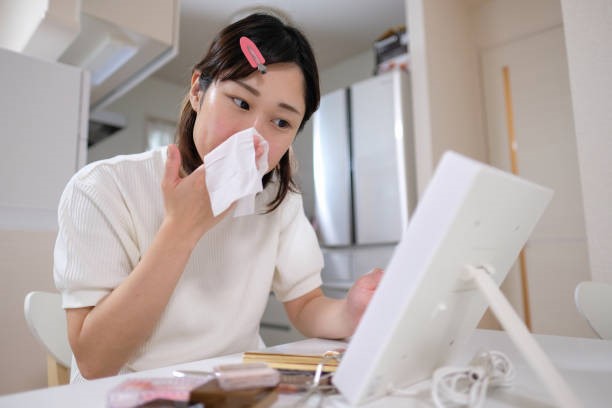
If you’re addicted to opioids, a treatment program can help you get off the drug and start your recovery. But how can these programs help reduce overdose deaths? The answer is simple: they give you a safe space to learn how to manage your addiction so that when you return to the world, you have all kinds of tools to keep yourself from using again.
In this blog post, we’ll discuss how opioid treatment programs help reduce overdose deaths.
The Role of Opioid Treatment Programs in Addressing the Opioid Crisis
The opioid crisis has been devastating to the United States. It is a complex issue that will require multiple approaches to solve.
One approach that has shown great promise in addressing this problem is opioid treatment programs. When people addicted to opioids can access and complete these programs, they can learn how to recover from their addiction and rejoin society.
OTPs provide individuals with access to treatment options that can help them overcome their addiction and begin living healthier lifestyles. These programs offer counseling services, medication-assisted therapy, and group support meetings that can help individuals become sober and lead productive lives. They also provide family education classes for loved ones who want to better understand how OUD works so that they can support their loved ones in recovery.
Opioid treatment programs vary in length, depending on each patient’s individual needs. Some programs last as little as six weeks, while others last up to one year.
In all cases, patients will be taught how to overcome their addiction and live a drug-free life, including how to deal with cravings for opioids and other substances. They will also receive support from counselors throughout the process so that they can feel comfortable discussing any issues that may arise during recovery.
These programs also help patients find jobs or other ways of supporting themselves financially once they complete their treatment program and begin working again; many people find that employment helps them stay sober because it gives them something positive to focus on instead of using drugs or alcohol every day.”
The Effectiveness of Medication-Assisted Treatment in Reducing Overdose Deaths
Medication-assisted treatment, or MAT, is a treatment for opioid addiction that combines medications like buprenorphine and naltrexone with counseling and behavioral therapies. MAT is effective in reducing overdose deaths by 50% or more.
This is an important finding because we have an opioid crisis in America; over 60,000 people died from overdoses in 2018 alone. The epidemic is primarily due to opioids like heroin, fentanyl, and prescription painkillers.
MAT was first introduced in 1996 and has been widely used since then. However, until now, there has been little research about whether it really helps reduce overdoses.
In this study, researchers found that in states with more MAT clinics per capita (for every 100,000 residents), there were fewer overdose deaths among those who received MAT compared with those who didn’t receive the treatment.
Many people who are addicted to opioids first get them legally through a prescription. Once they’re addicted, though, they often turn to illicit means like buying drugs on the street or stealing them from family members to get their fix.
The problem with this is that these methods can be unreliable, which means that some people may be unable to get their fix when they need it most. This can lead them back into withdrawal and potentially cause them to use more than they intended or overdose on their medication.
MAT helps prevent this by replacing illicit opioid use with prescribed medications. It offers similar effects without exposing users to harmful side effects like overdose or relapse due to withdrawal symptoms. MAT also helps relieve other symptoms associated with addiction, like cravings, depression, insomnia, anxiety, fatigue, and nausea/vomiting associated with withdrawal from opioids (or other substances).
The Importance of Increasing Access to Opioid Treatment Programs
The opioid epidemic has devastated families and communities across the United States, leading to thousands of overdose deaths yearly. However, opioid treatment programs (OTPs) have proven to be effective in treating opioid addiction and reducing the harm caused by the epidemic. Increasing access to OTPs is crucial in addressing the opioid crisis and improving public health outcomes.
OTPs provide medication-assisted treatment (MAT), which involves using medications such as methadone, buprenorphine, and naltrexone. These medications help reduce withdrawal symptoms and cravings and to help patients manage their addiction.
MAT is considered the gold standard for treating opioid addiction and has been shown to be effective in reducing opioid use, overdose deaths, criminal behavior, and infectious diseases like HIV and Hepatitis C. In addition to medication, OTPs provide counseling, support, and other services to help patients recover from addiction and rebuild their lives.
However, despite its effectiveness and potential benefits, many people cannot access MAT due to barriers such as stigma, lack of knowledge or understanding about addiction and treatment, inadequate insurance coverage, and limited availability of OTPs in certain areas.
The barriers are particularly true in rural areas and underserved communities, where OTPs may be few and far between. Furthermore, a shortage of qualified healthcare professionals trained in addiction medicine limits the number of providers offering MAT.
To address these barriers and increase access to OTPs nationwide, policymakers and healthcare providers must take a multifaceted approach, such as:
Expanding insurance coverage for MAT
Increasing funding for OTPs
Providing education and training for healthcare providers
Reducing stigma around addiction
Increasing the number of healthcare providers trained in addiction medicine
Improving public health outcomes (including reducing opioid use)
Reducing economic costs associated with the opioid epidemic
Improving individual well-being by helping individuals rebuild their lives
Conclusion
While opioid treatment programs have proven effective in reducing opioid use and overdose deaths, the unfortunate reality is that many individuals still face significant barriers when it comes to accessing these life-saving resources. To address this issue, it’s crucial that policymakers and healthcare providers take swift action to increase access to OTPs and other evidence-based interventions. By working together, we can reduce the harm caused by the opioid epidemic and improve public health outcomes for all.
At Confidant Health, we’re committed to providing innovative solutions for our patients. Our telemedicine platform connects patients with licensed addiction specialists, making it easier for individuals to receive the care they need. Together, we can work to combat the opioid epidemic and improve the lives of those affected by addiction.






